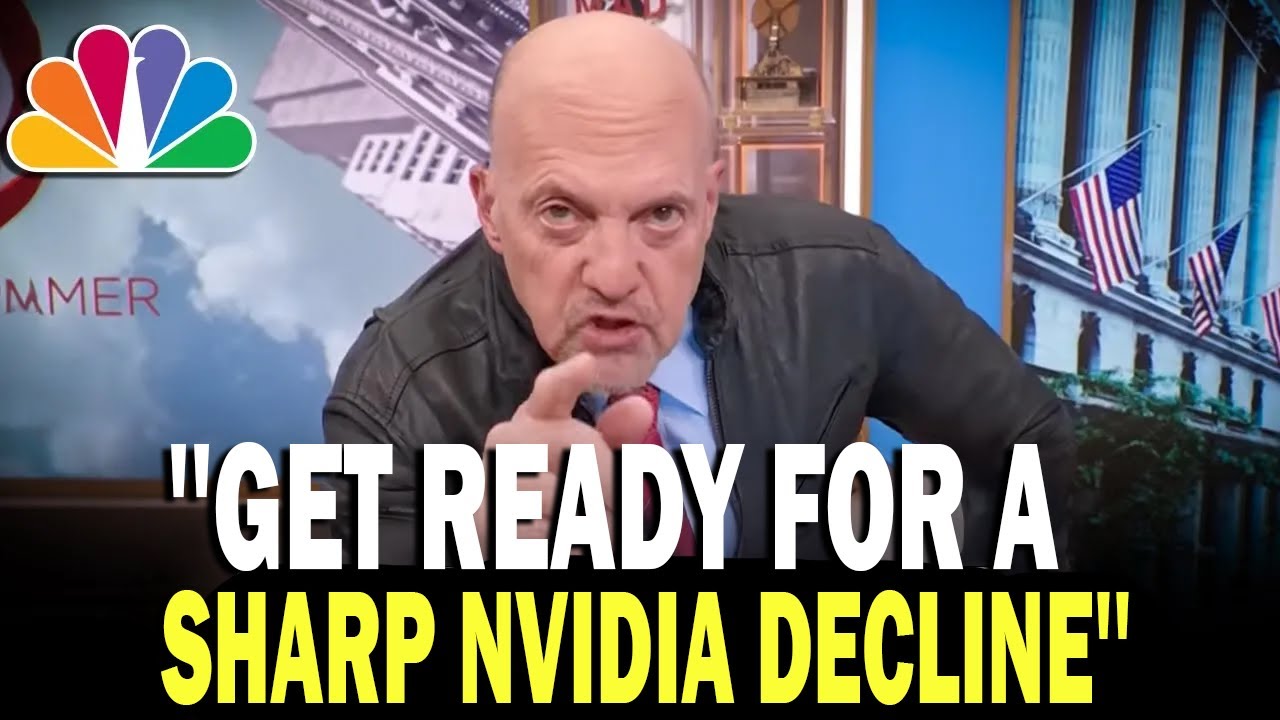Jim Cramer discusses the potential for continued growth in NVIDIA and the AI sector, highlighting its strong market position, strategic partnerships like CoreWeave, and diversification into new technologies. He also warns of geopolitical risks, especially China’s efforts to develop its own AI chips, which could challenge NVIDIA’s dominance, emphasizing the importance of supply chain stability and technological differentiation for future success.
The video features Jim Cramer discussing the current state of the market and the potential for further gains, particularly in relation to NVIDIA and the broader AI and cloud computing sectors. He questions whether the market can still be considered fair or if it has become more inflated, suggesting that any continued rally might be short-lived or follow a pattern of initial optimism followed by a decline, especially after positive news such as a pause on tariffs. Cramer emphasizes that recoveries often start as skeptical market rallies, driven more by hope than hard facts, and that investors should be cautious about assuming sustained growth.
He highlights the strong position of companies like CoreWeave, which benefits from guaranteed contracts with OpenAI and Microsoft, and is building out data centers with NVIDIA GPUs. Cramer notes that CoreWeave appears to be gaining capacity faster than competitors, partly due to NVIDIA’s investment and close relationship with them. However, he raises concerns about whether this advantage is sustainable or if it reflects preferential treatment, which could pose risks if market dynamics change or if NVIDIA’s supply of GPUs becomes more balanced and less exclusive.
Cramer discusses the competitive landscape, emphasizing that NVIDIA remains the leader in GPU technology for AI training, with little close competition in that core market. He mentions that NVIDIA is diversifying into other areas like robotics, autonomous vehicles, and humanoid AI, which could be important for sustaining growth over the next several years. However, he also points out that geopolitical factors, especially China’s potential to develop its own GPU technology, could threaten NVIDIA’s dominance. While Chinese chips are not yet close to NVIDIA’s performance, the possibility of China closing the gap within 12 to 24 months remains a concern for future market share.
The conversation touches on the risks associated with reliance on NVIDIA’s supply chain, especially given the close relationship with companies like CoreWeave. Cramer suggests that the market’s future success depends on whether these companies can continue to execute and secure enough GPU capacity amid fierce competition. He warns that when supply and demand become more balanced, differentiation will be key, and companies that can offer higher performance or better management will have an advantage. The overall outlook remains cautiously optimistic but recognizes significant geopolitical and technological challenges ahead.
Finally, Cramer addresses the geopolitical aspect, particularly China’s efforts to develop its own AI chips to reduce dependence on U.S. technology. He believes that Chinese chips are still significantly behind NVIDIA’s in terms of power and speed, which are critical for AI training and deployment. Although China is making progress and could close the gap within a year or two, the current advantage in performance and efficiency still favors NVIDIA. He concludes by urging viewers to subscribe for ongoing updates on NVIDIA and the AI sector, emphasizing the importance of staying informed about these rapidly evolving markets.
